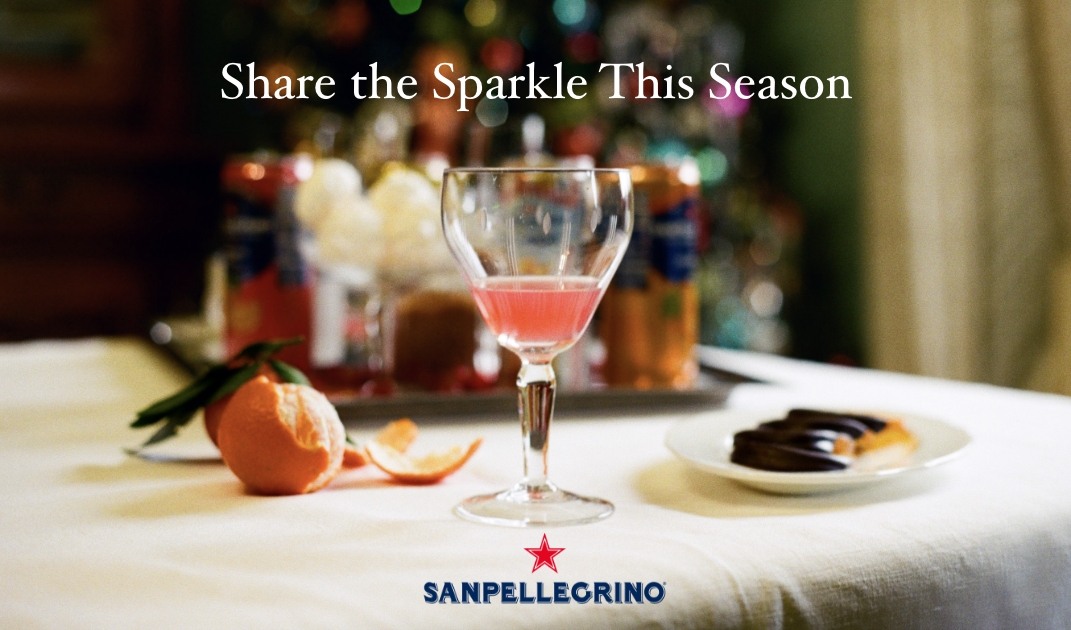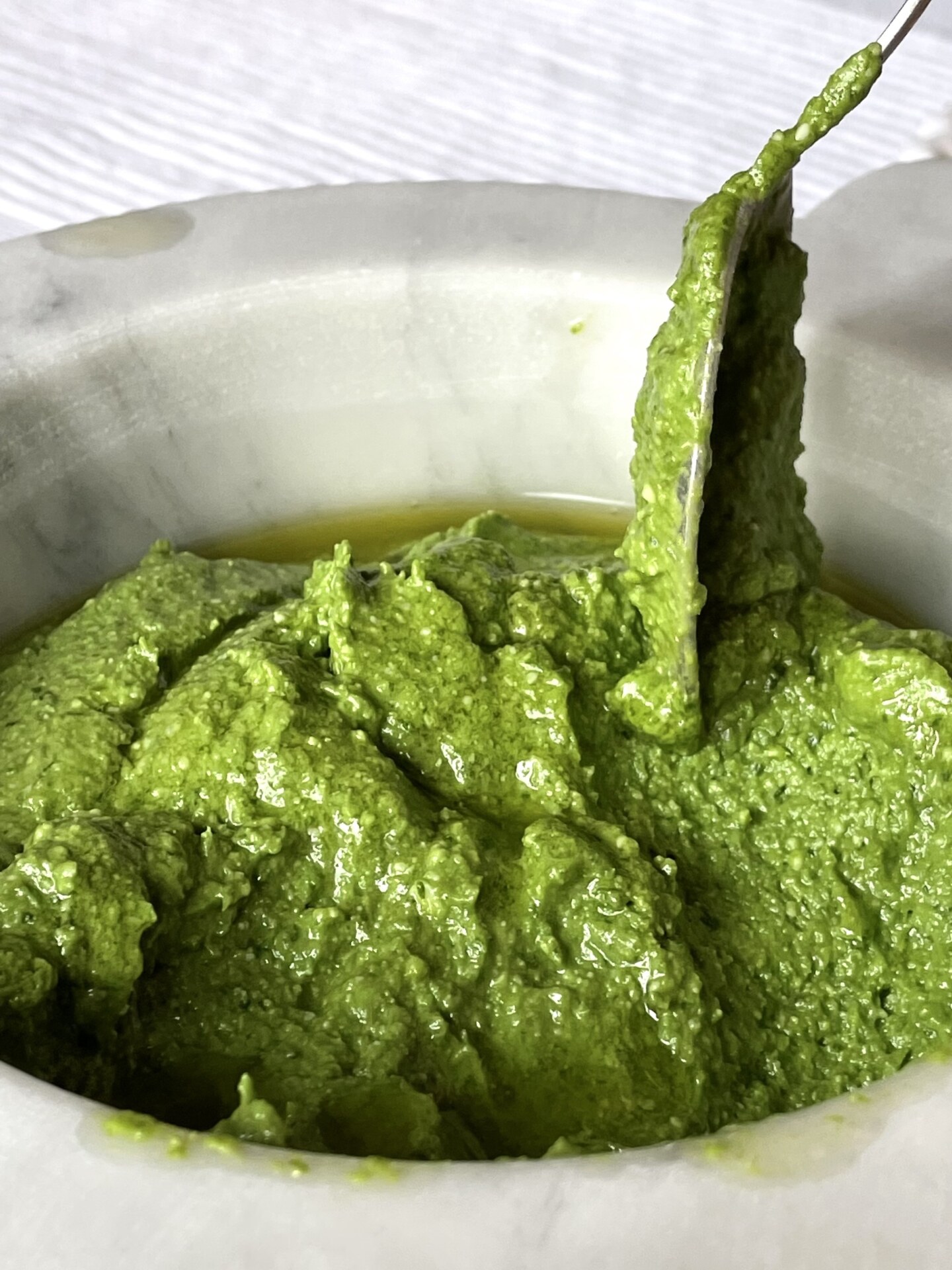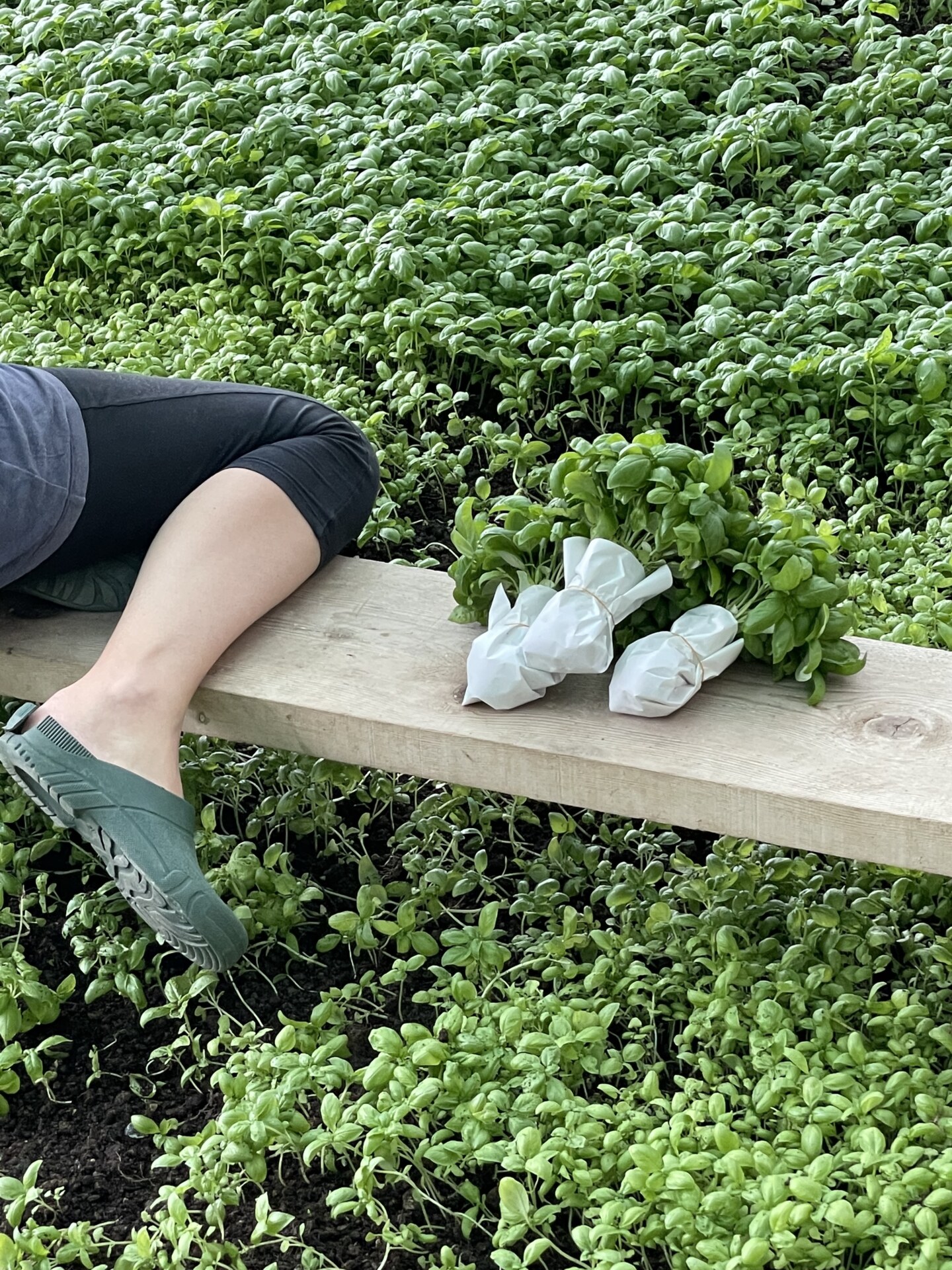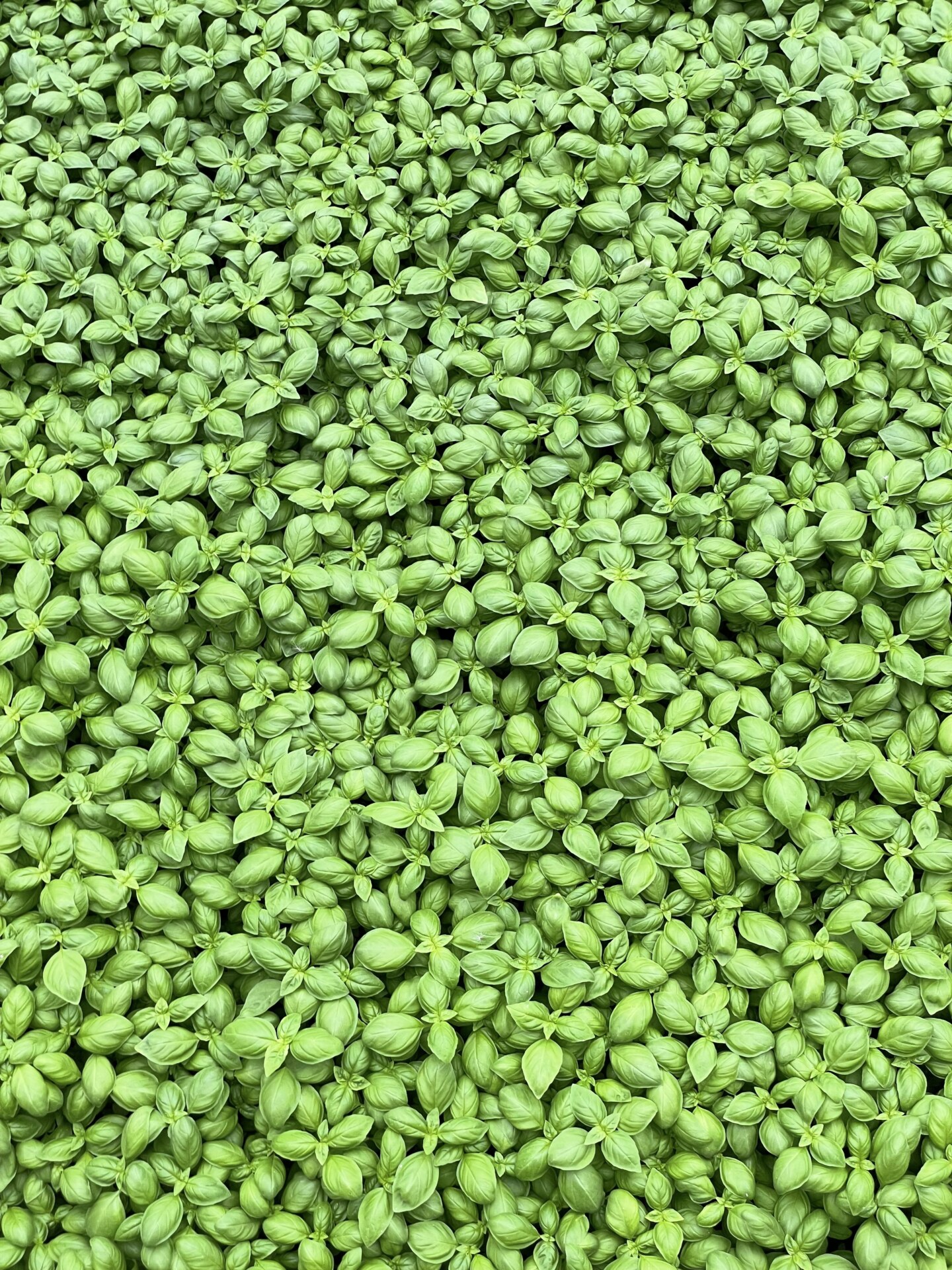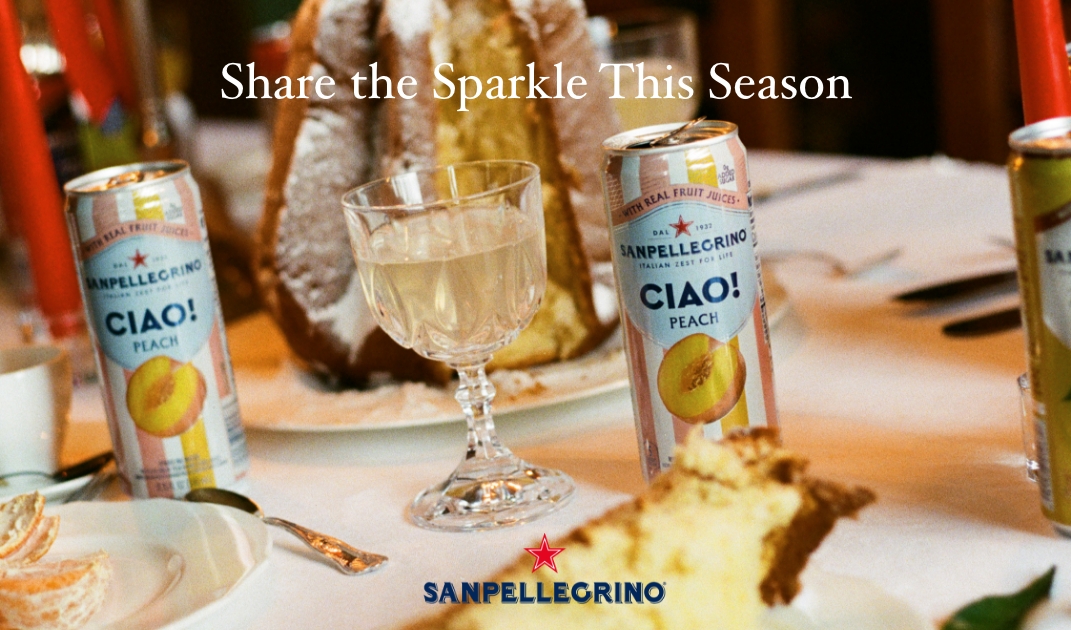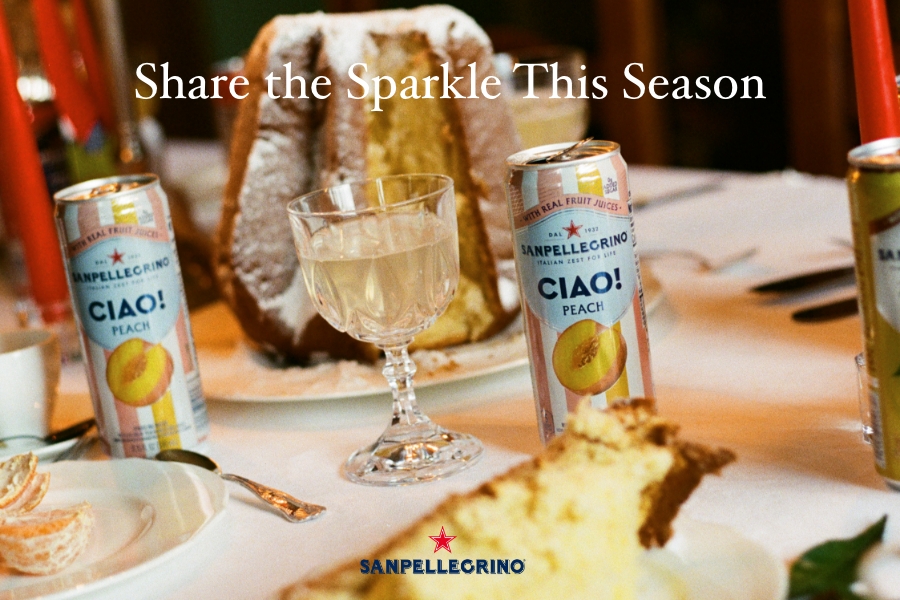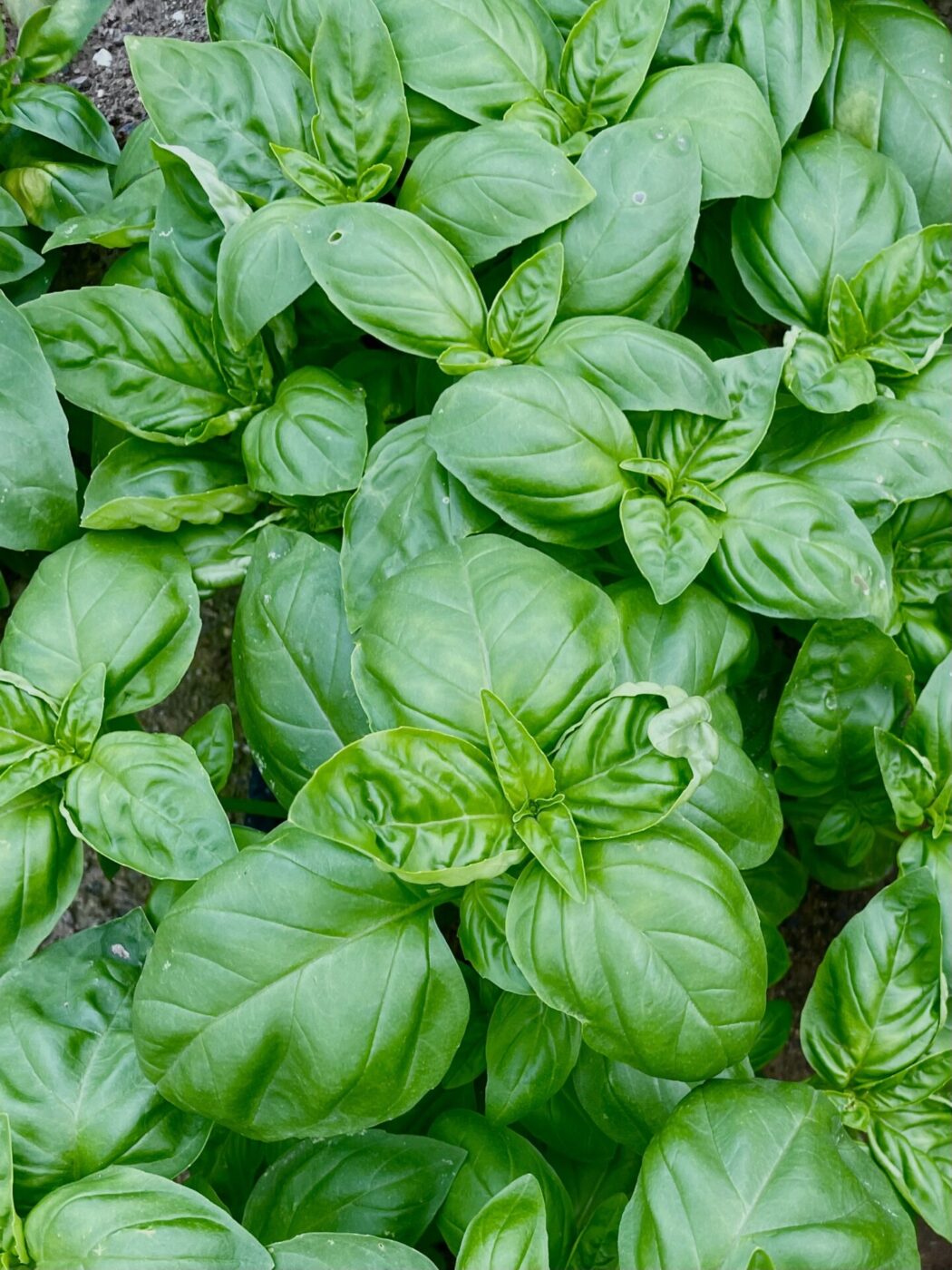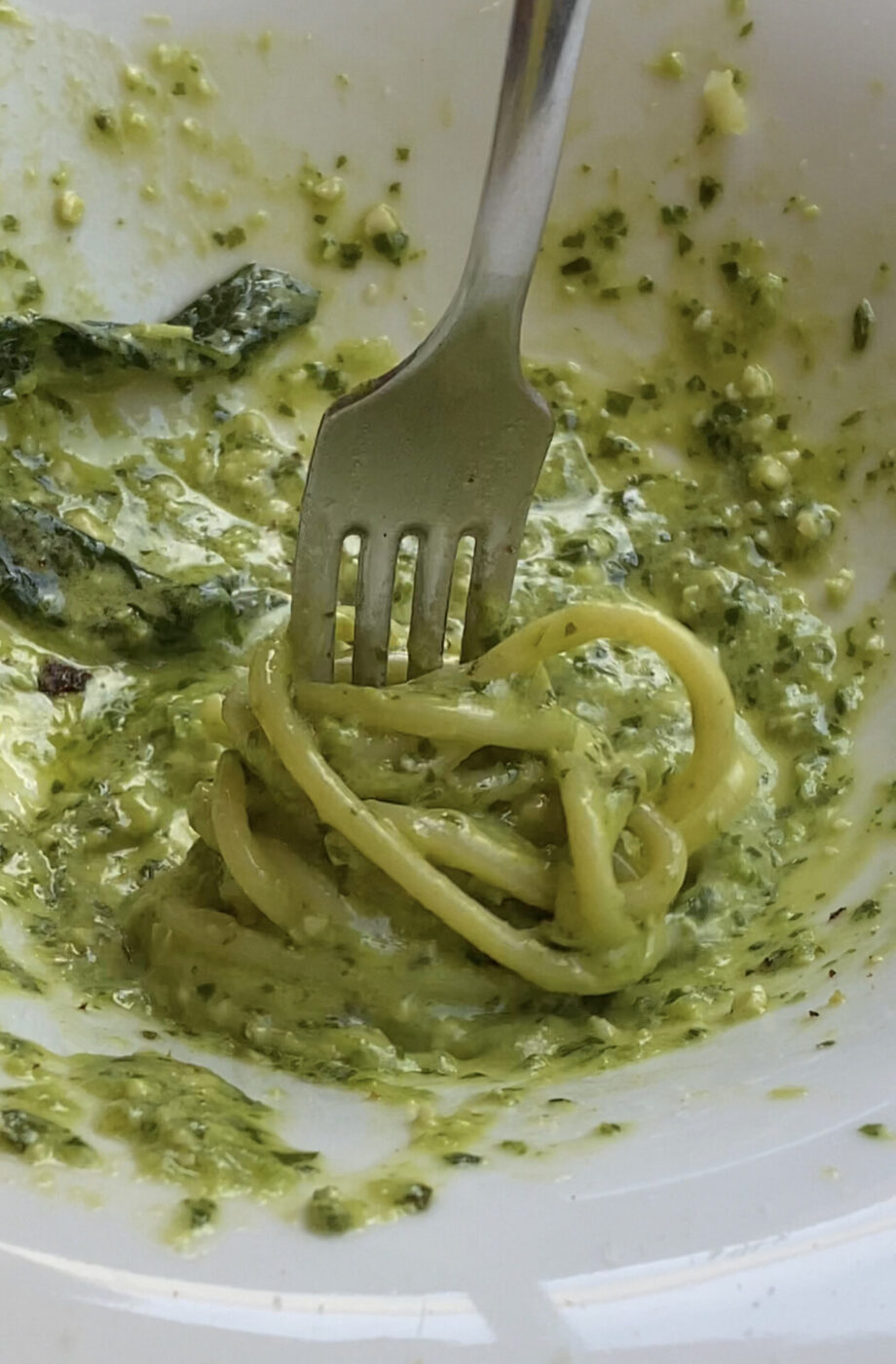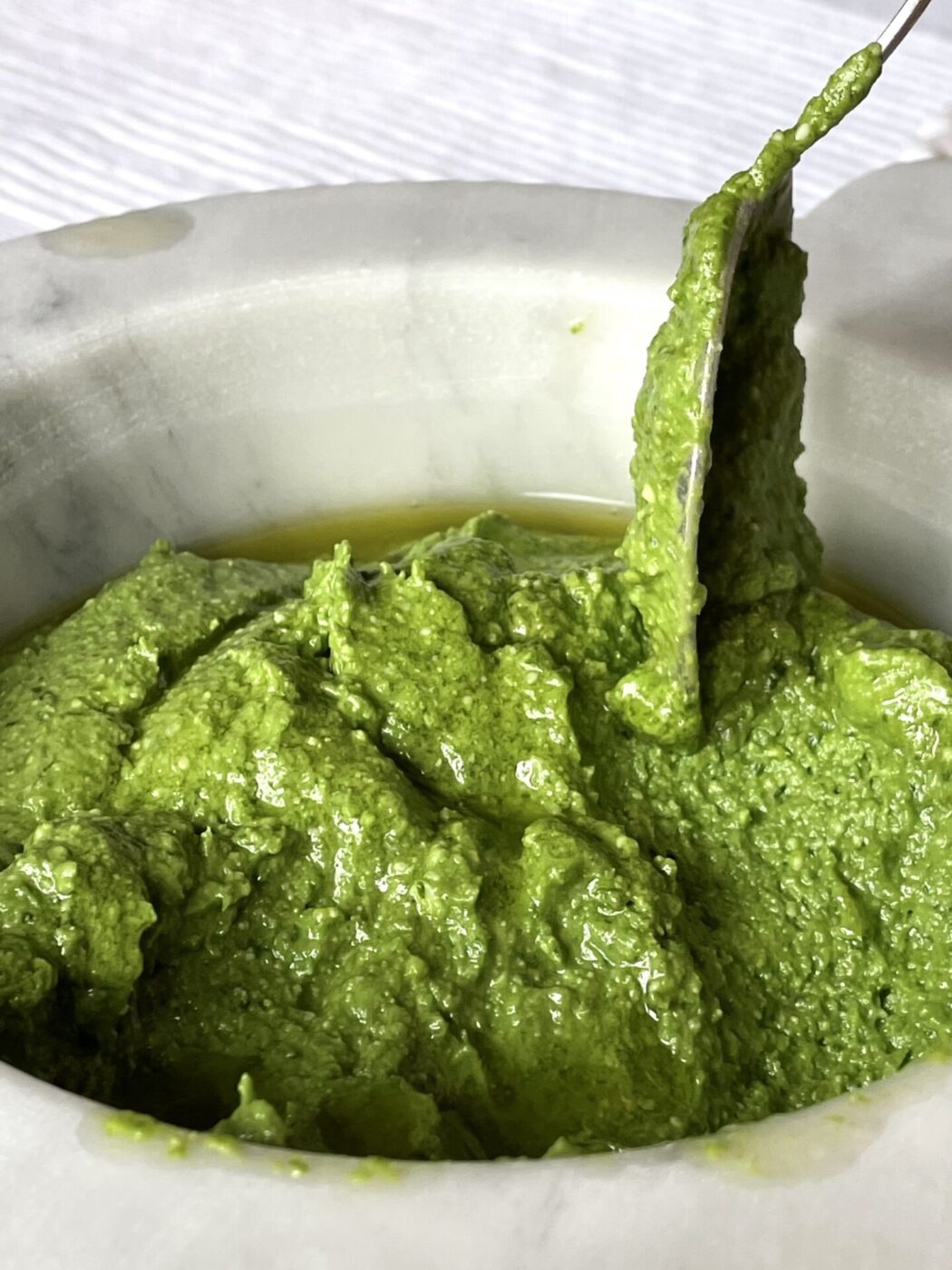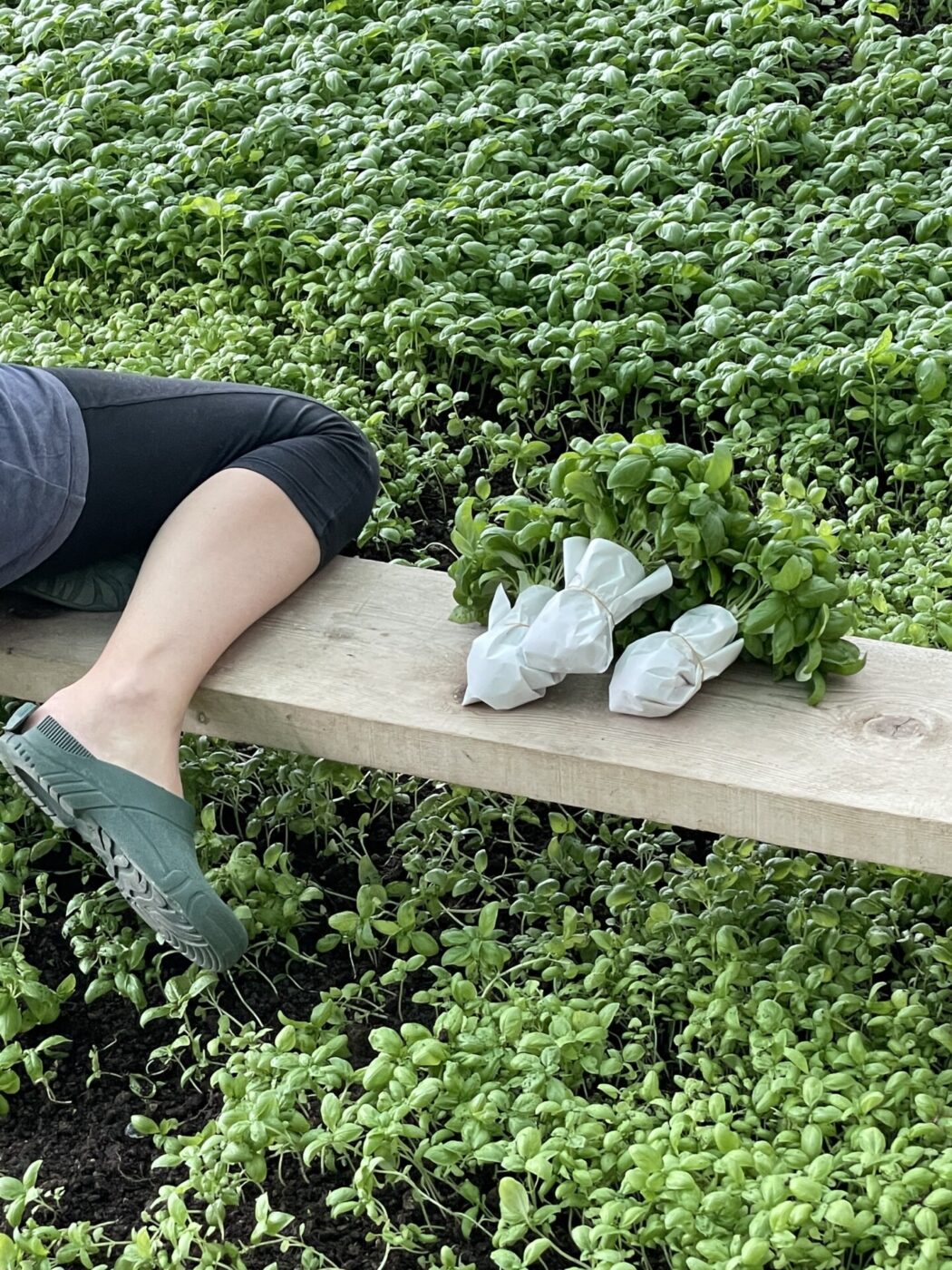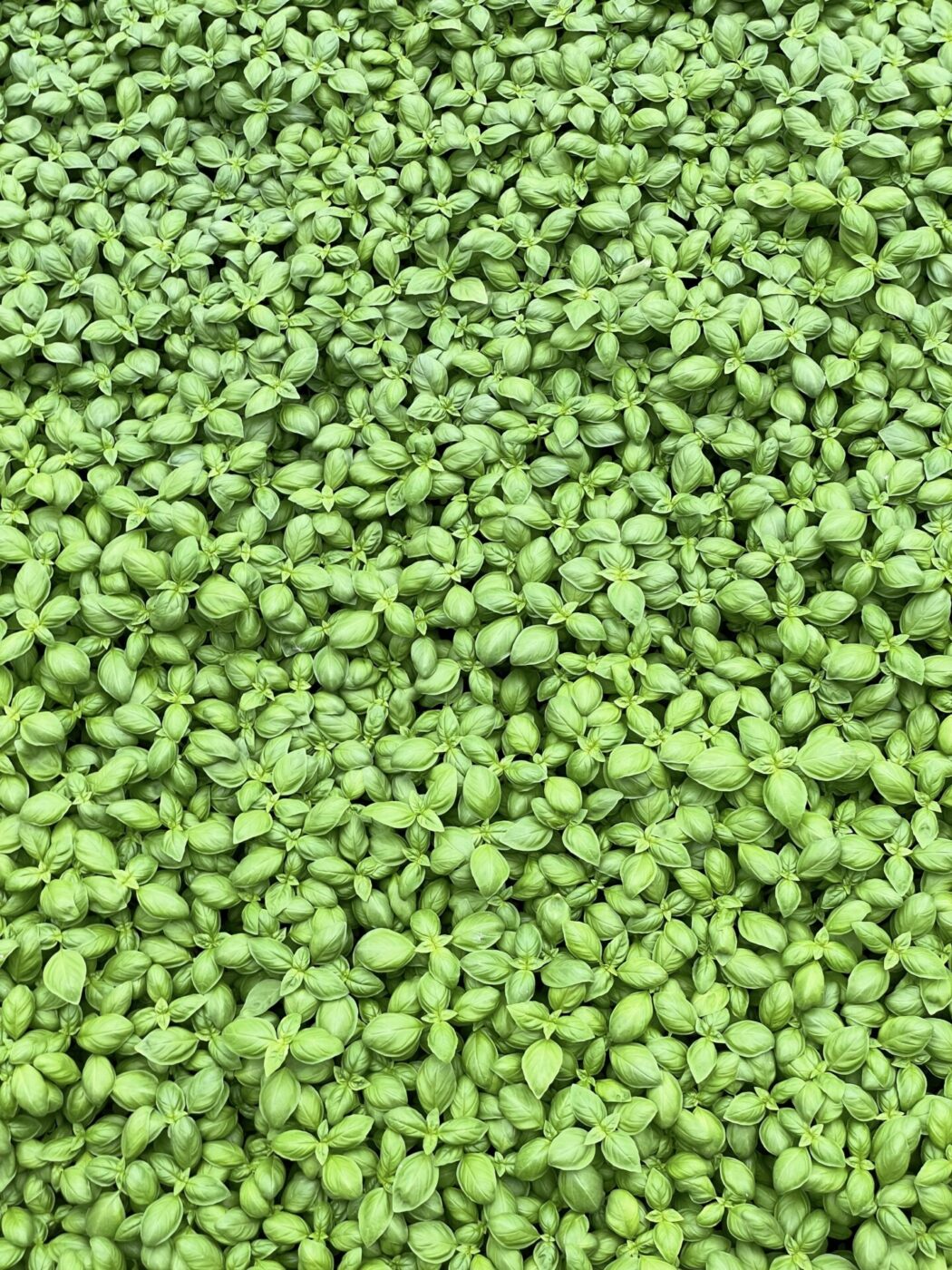I live in a concrete jungle, and by “concrete jungle” I mean that I live in an apartment filled with 30 plants in New York City.
I have cared for some of these plants for years and for others for just a few months. Friends call me for plant care advice; my Instagram explore page is filled with images of other people’s jealousy-inducing greenery and decor. And though my pothos, monstera, snake plants, palm, and money trees have always thrived, herbs have been a pain point. I’ve tried growing mint, rosemary, oregano, lavender, and basil and failed miserably, ushering in jokes from my father, a former farmer, about my inability to grow them.
When quarantine came about, in April of 2020, I gave myself three simple goals: to organize my jewelry, exercise daily, and grow basil, so I could make my own pesto.
I love pesto. I put it on everything from pasta to sandwiches to–what close friends have called “disgusting”–eggs. A roommate I had in university put it on his eggs and suggested I try it; I did it once and never looked back. My favorite restaurant in New York City–Via Carota–serves octopus with pesto, and it’s delicious. I don’t think one can really ever have too much pesto.
Beyond utility, growing my own basil allowed me to bring a little bit of Italy into my home. My life is filled with items from the Mediterranean country where I lived for a few years: a map of the capital, various clothes and accessories, and some furniture, but what I wanted was ritual, not just objects.
Earlier that year, I had read Fanny Singer’s book, Always Home: A Daughter’s Recipes and Stories. The book was an intimate portrait of herself and her mother, the chef and food activist Alice Waters’, approach to food and life. I was struck by how Alice’s “fixation with beauty never approached preciousness,” as Fanny put it. There were beautiful objects in their home, but they were used to create wonderful meals and memories. They didn’t live and die on shelves or in cabinets. The ritual of growing something, picking it, cooking it, and sharing it stayed with me.
My friend Victoria, who is from Rome, once described to me that “in my family [making pesto] is kind of a ritual. It’s deeper than just a sauce to put on pasta. It’s a connection to our heritage and our roots. For me, when I taste it, I have intense flashbacks of my grandparents’ veggie garden in the country, summers spent picking those same vegetables, the smell of tomatoes, straw, and pool water on my skin from playing all day. That smell that is so unique to the countryside in Italy there are no words to describe it. I hear my grandmother’s voice.”
Though Zimbabwe, where my family is from, is a long way from pesto’s birthplace of Genoa, I loved the idea of being part of that ritual.
I ordered a baby basil plant and some seeds from a local plant store and got started. For weeks, I was diligent about caring for the basil. As the lavender wilted and the mint was fried by the sun, my child, the basil, thrived. I watered it every other day, making sure the water drained through the bottom; I rotated it in its spot next to my kitchen window to ensure it got plenty of sunlight. I quickly learned that the secret to keeping it growing was to trim it regularly.
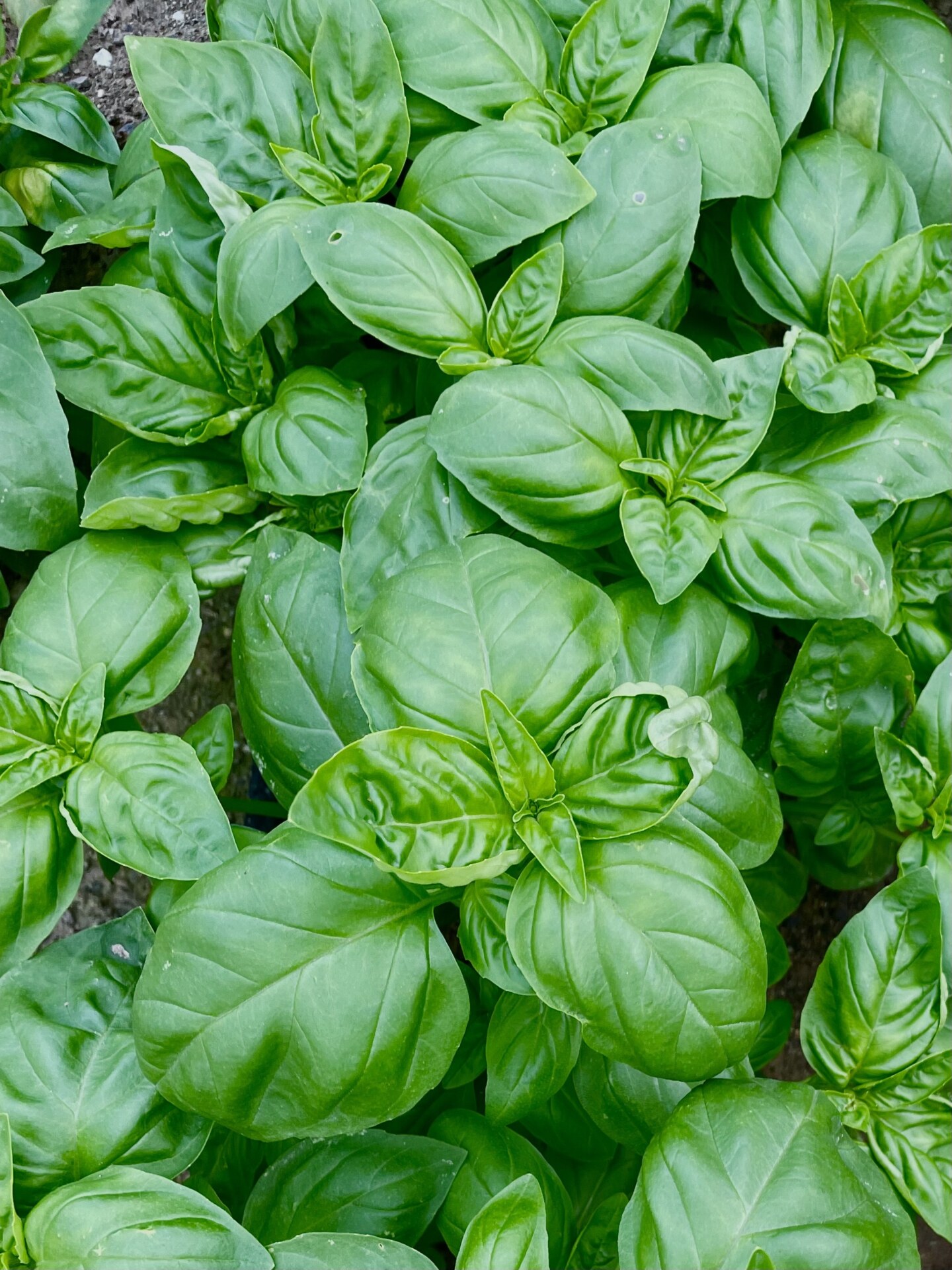
My love for pesto began in high school, and I remember it the way most people remember their first kiss.
I was sitting in Noodles and Company in downtown Silver Spring, Maryland after theater rehearsal when I ordered a bowl of pesto cavatappi. I had no idea what the ingredients even were. My diet until then mostly consisted of sadza, the staple food in Zimbabwe, and various vegetable and meat sides, including dovi (a Zimbabwean peanut butter vegetable dish that gives pesto a run for its money). When I had that first bite of cavatappi, I was a goner.
I’d had a life-long fascination with Italy, a far off place I’d never visited, but had read voraciously about since childhood when my father gave me a picture book of ancient Rome. I recall taking some leftovers home to offer to my parents. My father was intrigued. My mother, less so. Pesto did not have a breakthrough into our kitchen (it was expensive and our apartment was too dark to grow something like basil), but I tried to eat it anytime I got the chance.
It’s no surprise then that on the day that I moved to Rome, four months after turning 18, I walked out of Despar with many jars of different kinds of pesto. I didn’t know there could be so many variations. Did everyone else? I called my parents and told them a few days later. Each time I ate out that first year in the city, I ordered pizza with pesto or pasta with pesto. Occasionally, I veered and ordered carbonara or risotto. During my second year in Italy, I had a roommate who had an equally alarming love of the sauce. This would be a friend for life, surely.
Back to February of 2020: from New York, I read headlines about coronavirus in Italy, closely followed the Instagram stories of friends, and Facetimed with many of them. I felt a pang of guilt and wished I could be closer to them or more helpful from afar, somehow. Things weren’t bad in New York yet, but they soon would be. I remember my friend Giulia asking me from her own plant-filled Roman apartment, “Do you understand how bad this virus is?”
The virus arrived in New York soon after (it likely was already here. We just didn’t know). In April, sirens blared daily as they headed to the Covid-designated hospital a few blocks away. As cases in the city rose, I clung onto my plants–especially my basil–as a form of self care. Watering, rotating for sunlight, trimming for growth became my ritual. I started growing some plants for friends.
After a few months, my pride and joy, my basil plant, was large enough for me to make my first batch of pesto. I reached out to Italian friends to see if they had recipes they were loyal to and found that there were even more variations than I thought. Some people liked Parmigiano Reggiano. Others hated it. One friend suggested I try spinach instead of basil. Another suggested pecorino instead of Parmigiano Reggiano. I’m not one to steer from the classics (please keep your zucchini noodles to yourself), so I got some pine nuts, pulled out my favorite olive oil, some garlic, some Parmigiano Reggiano, and salt, and got to work.
I recently learned the literal meaning of the word “pesto.” It comes from the verb pestare–to crush or to pound. The sauce is traditionally made by being ground in a mortar and pestle. Armed with that knowledge, I knew I had to use a mortar and pestle to make my own pesto. (I don’t own a food processor, but everyone assured me that it works, too). I used the mortar and pestle from Permanent Collection, the company Fanny Singer is a cofounder of, to grind the ingredients together. How was it?
I’ll never buy a jar of pesto in a grocery store again.
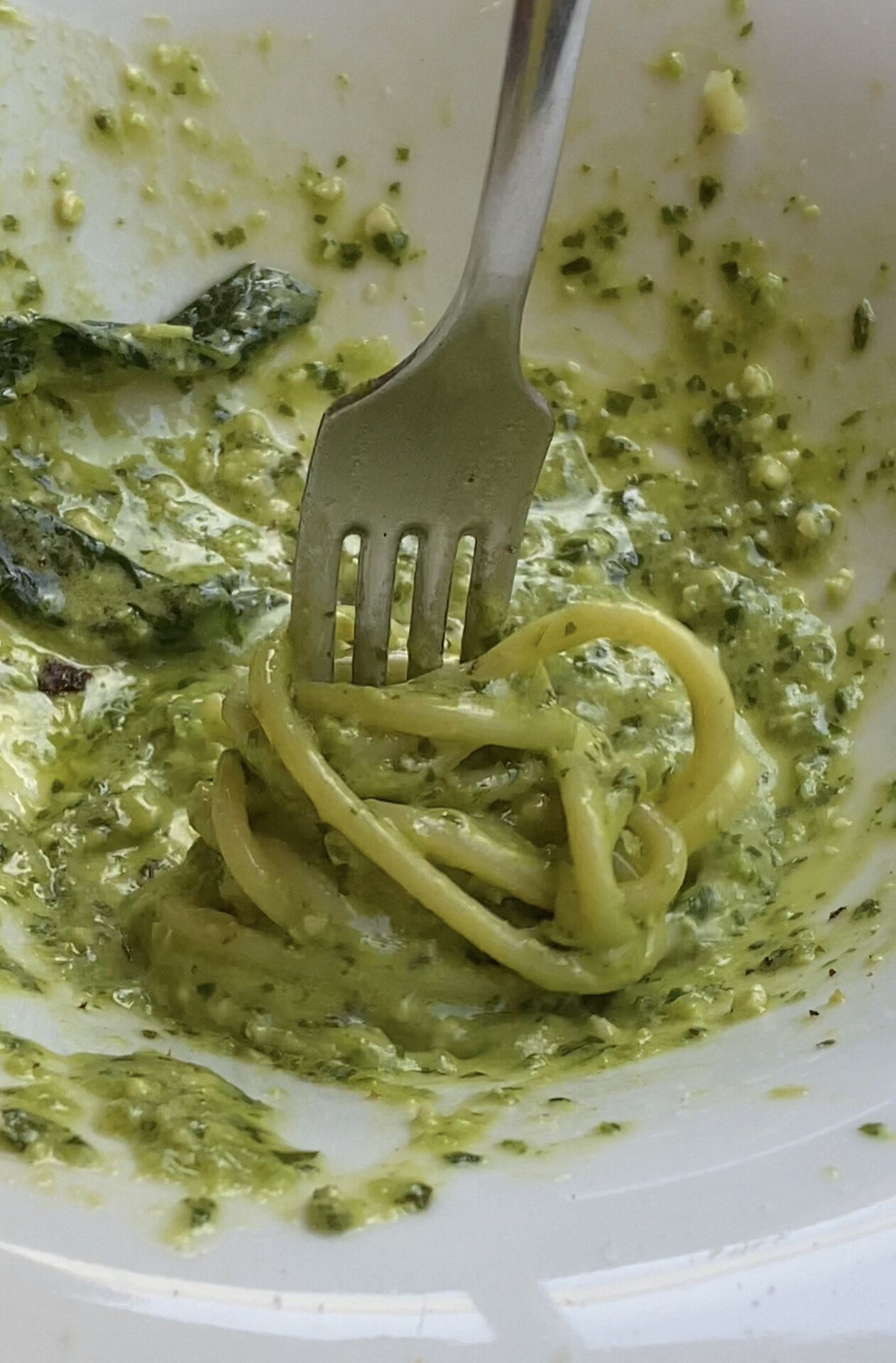
Here’s how to make a classic Genovese pesto:
Ingredients:
We usually just kind of eye-ball it all, but these measurements are roughly what you need:
- Two big bunches of basil leaves, plucked from the stems. Smaller leaves are preferred for their more delicate flavor; the bigger ones can sometimes develop an almost minty edge.
- 3/4 cup Parmigiano Reggiano or grana padano, finely grated
- 1/4 cup Pecorino romano, finely grated
- 1/2 cup olive oil
- 1/4 cup pine nuts
- 1 clove garlic, crushed
- Salt and pepper to taste
Method:
- Shock the basil in ice water for a few minutes while you grate the cheese and crush the garlic. Dry the basil thoroughly with a paper towel.
- In the bowl of a food processor or a mortar and pestle, add the garlic, pine nuts, and cheeses.
- Pulse in a food processor or crush and emulsify with the mortar and pestle until it all becomes a coarse, grainy paste.
- Add basil. If using a food processor, be careful not to let it overheat, and take breaks if need be. If using a mortar and pestle, drag the basil along the sides of the mortar with the pestle, so the leaves tear without being completely crushed, which will make them brown. Do this at room temperature.
- Slowly add in olive oil, mixing as you go, until it reaches the desired creamy consistency.
